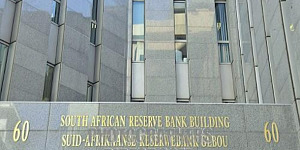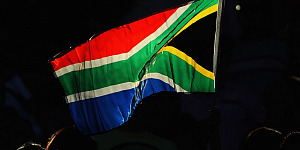Fitch Ratings has affirmed South Africa's's Long-Term Foreign-Currency Issuer Default Rating (IDR) at 'BB+' with a Negative Outlook.
Key Rating Drivers
South Africa's 'BB+' ratings are supported by strong macroeconomic institutions, a favourable government debt structure and deep local capital markets. They are constrained by low growth potential, high and rising government debt, large contingent liabilities and pressures on policy-making from extremely high inequality. The Negative Outlook reflects uncertainty about the government's ability to stabilise public debt over the medium term.
In its Medium-Term Budget Policy Statement released in October, the government confirmed a significant deterioration of the fiscal situation but took only limited adjustment measures. The deterioration reflected both additional expenditure (around 0.5% of GDP) to support Eskom, the troubled public electricity monopolist, and revenue shortfalls on weak growth and capacity challenges. Initial adjustments, including expenditure cuts and planned but as yet unspecified revenue-boosting measures were insufficient to offset this.
The government committed to adjusting its fiscal plans further to achieve a balanced primary budget balance excluding Eskom support by FY22/23, compared with a deficit of 1.1% in its current projections. To achieve this, it emphasised the need to reduce compensation expenditure, which has risen sharply over the last decade, although it also will review other expenditure items and revenue-raising options. However, Fitch believes substantial reductions in compensation expenditure could only emerge over the medium term, as powerful public sector unions will resist cuts, the current public sector wage agreement will only expire in March 2021, and efforts to curb payrolls have had limited success.
Nonetheless, Fitch expects some adjustments to be announced in the February 2020 budget, including expenditure and revenue measures, which will more than offset continued possible under-performance of revenue. As a result, Fitch expects the deficit to fall to 5.7% of GDP in FY21/22 (government: 6.2%), after a deficit of 6% in FY19/20 (government: 5.9%) and 6.2% in FY20/21 (government: 6.5%). Due to our lower deflator forecast, gross loan debt (excluding local government debt) will still rise to 69.4% in FY21/22, up from 56.7% in FY18/19, while general government debt (including local government) will be 71.3%.
Contingent liabilities remain a significant rating weakness. Liabilities of non-financial public corporations were 15.9% of GDP at end-March, with additional contingent liabilities, for example related to public financial corporations and independent power producers, less sizeable and less likely to materialise. The biggest risk is Eskom, which at end-March had debt of 9% of GDP, and has been granted government support of ZAR138 billion (2.7% of 2019 GDP) for FY19/20 to FY21/22. Debt relief for Eskom, for example through a transfer of debt to the government, is under discussion, but this is not included in our debt projections as it is unlikely to materialise in the near term. Progress on Eskom's turnaround strategy is likely to remain slow, partly stifled by trade union resistance against measures with potential implications for payrolls.
South Africa's fiscal challenges partly reflect continued disappointments on economic growth. We expect GDP growth of just 0.4% in 2019. We forecast growth of 1.5% in 2020 and 1.7% in 2021, as gross fixed investment will start to recover after a long period of weakness and this will also feed through to consumption. By comparison, the current 'BB' category median growth rate is 3%. Risks to the outlook remain mainly on the downside as continued load-shedding could hit production and induce companies particularly in the mining and manufacturing sectors to postpone major investments until they are assured of a reliable power supply. Fiscal consolidation and adverse external developments could also hit growth more than we currently factor in.
Potential growth, which we estimate at 1.7%, is unlikely to be raised significantly by government reforms, as the policies are too limited in scope and implemented at too slow a pace. Measures include an easing of visa restrictions for some countries to boost tourist arrivals, an auction of mobile phone spectrum with the hope of reducing mobile data prices and a new Independent Power Producer programme that could boost investment. Broader reform plans to boost competition and competitiveness will take significant time to be implemented and be effective.
Meanwhile, legislation on expropriation without compensation is making gradual progress through the policy stages and the debate about nationalisation of the South African Reserve Bank (SARB) has re-emerged. While Fitch believes neither will have a significant direct negative impact, the debates could keep alive concerns among investors about the protection of private protection in a highly unequal society. The National Health Insurance bill, projected to cost 0.5%-1.0% of GDP, was tabled this year but is not planned to come into effect until FY25/26, and possibly later.
South Africa's external vulnerability is contained, although foreign investor concerns about fiscal pressures could lead to more volatility after the exchange rate stayed relatively stable during 2019 helped by a benign international environment. The high share of non-resident participation in local currency government debt, at 36.9% in October, and the average current account deficit of 3.9% of GDP over 2019-21 is above the current 'BB' category median of 2.8%, highlighting susceptibility to shift in global funding conditions.
However, South Africa gets some insulation from external shocks from its low share of foreign-currency debt in total government debt (10.8%), the long average maturity of government debt, the free floating exchange rate, the very high liquidity of the rand-dollar market and the credibility of the SARB. The sizeable domestic asset management industry, with funds of 196% of GDP, and the exposure to fixed income is relative low, so domestic funds could support government funding if non-resident investors move out.
Inflation is forecast to remain well contained, close to the centre of the SARB's 3% to 6% target range. However, we do not expect SARB to lower rates over the coming two years after the cut in July as increasing investor concerns about the fiscal trajectory could pressure the exchange rate and push up inflation. The banking sector is not expected to pose a risk to the sovereign, with a Bank Systemic Risk indicator of 'bb'. Legislation on bank resolution and deposit insurance, which could start to be implemented from 2021, should further insulate the sovereign from risks related to the banking sector.
World Bank governance indicators for South Africa (57th percentile) are significantly stronger than the current 'BB' category median (44th percentile) despite evidence of state capture under the previous president and exceptionally high inequality. There is a risk that social tensions and pressures could lead to more populist policies that negatively affect growth or fiscal stability. Continued infighting within the ruling ANC may hobble policymaking and distract attention from fiscal challenges.






































